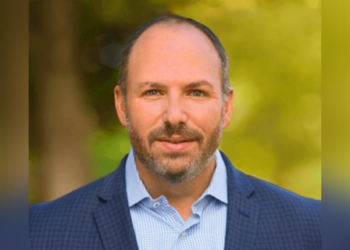It’s the same amount of time from 2022 to 1992 as it is from 1992 to 1962. Unfortunately, when thinking about “30 years ago,” 1962 is no longer the reference point for many young adjusters who were born after the 1990s.
The late 1990s and early 2000s saw many seminal losses which shaped a generation of adjusters such as low-impact investigations and mold claims. Insurers adapted and trained low-impact adjusters and installed protocols; they changed policy language regarding mold coverage. And in the sense that fashion trends come around every 30 or so years, mold claims have begun to rear their heads.
It is unlikely younger adjusters know about Ballard v. Farmers Insurance Group — the case with an initial $32 million verdict against the insurer for bad faith claims handling. Most people assume Ballard is about mold — and it is — but the case is also about the superior knowledge that adjusters have and failure to inform the claimant of that superior knowledge.
Ballard sparked a rush of litigation involving a fear of mold, but molds are common in modern society. It grows outdoors as well as indoors in a wet, warm, environment with an ample food source such as paint, drywall, carpet, fabric and wallpaper.
Ballard suffered a plumbing leak in 1998; this was repaired, but a few months later, the floor began to buckle. The contractor informed the Farmers’ adjuster of the presence of mold, which the adjuster ignored according to the lawsuit. The floor was waterlogged creating additional damage to the house. Ballard and her family contracted several illnesses, including coughing blood. Farmers retained a microbiologist who found airborne Stachybotrys spores, a toxic mold. The issue at hand in Ballard is that Farmers allegedly knew the mold was toxic and did not inform Ballard and her family about the potential health effects until after they got sick.
The superior knowledge about the toxicity of mold is what the case was about and led to claims handling standards for mold to be created. When any water loss is reported, it is best practice for an adjuster to:
Standard claims handling procedures dictate an adjuster should inform the claimant (first- or third-party) of the possible health impact mold can have with exposure. This can be done in the initial conversation and in a letter that also advises the claimant to control the moisture to the loss area.
Perhaps the tricky part of handling water damage claims is the advice to prohibit mold growth while simultaneously protecting the scene for the appraiser to inspect the damage and write an estimate. Again, a detailed conversation followed by a letter will help the adjuster.
Policies state it is the duty of the insured to protect the property from further loss — this is an important conversation to have with the claimant. Also important is not to lead the claimant down the garden path and imply there is coverage when there may not be any. It is a fine line to walk.
Adjusters must take care they are not waiving coverage defenses by instructing the claimant to preserve the property and issue a reservation of rights letter if needed. For example, if there is an absolute mold exclusion on the policy, and there is mold present at the loss location, the mold still needs to be remediated. Therefore, the claimant will still need to remove the source of the water which is causing the mold to grow, but the adjuster must forewarn the claimant that the mold remediation will be deducted from the overall indemnity settlement. Likewise, if there is a sublimit for mold remediation or cleaning, this should be conveyed to the claimant verbally as well as in writing.
Having a phone conversation with the claimant, followed by a letter, will reduce misunderstandings of coverages as the claim progresses. It is also a good idea to have the retail agent involved in the conversations with the insured who may even be held liable if he or she is a landlord whose property has a mold exposure.
There are more lawsuits for mold coming to light besides a 2021 Florida case in which a jury awarded a tenant $48 million after mold-contaminated her apartment due to a roof leak. Getting back to basics with the standard claims handling procedures for mold investigation will help avoid many of these claims going to suit in addition to providing superior care to the people who file a claim on the policy.
Chantal M. Roberts, CPCU, AIC, RPA ([email protected]) is an expert witness whose career reflects over 20 years of accomplishments in the insurance industry as an adjuster and a claims manager. In addition, Roberts is the author of the Understanding and Handling Cannabis Insurance Claims curriculum for ALM’s new Cannabis Insurance Coverage Specialist designation.









